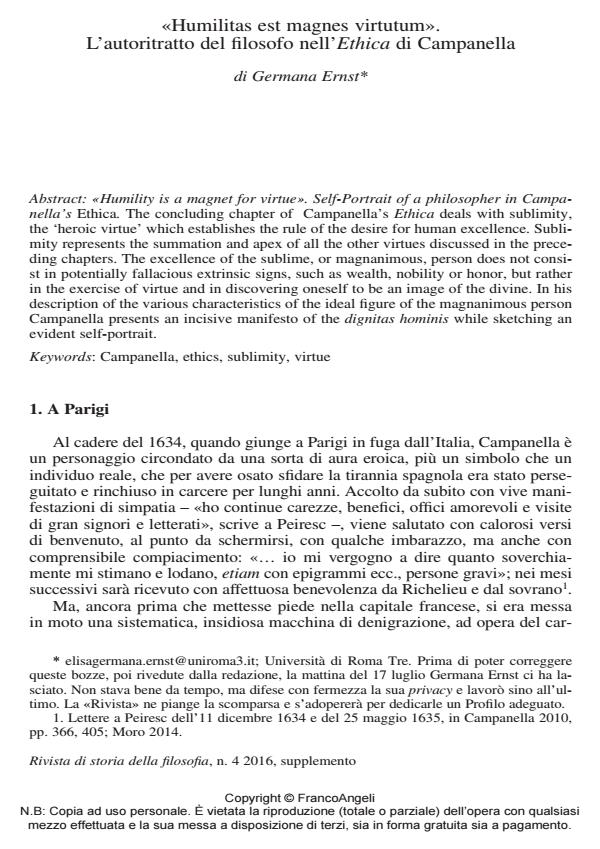«Humility is a magnet for virtue». Self-Portrait of a philosopher in Campanella’s
Journal title RIVISTA DI STORIA DELLA FILOSOFIA
Author/s Germana Ernst
Publishing Year 2016 Issue 2016/suppl. 4
Language Italian Pages 13 P. 111-123 File size 108 KB
DOI 10.3280/SF2016-004-S1009
DOI is like a bar code for intellectual property: to have more infomation
click here
Below, you can see the article first page
If you want to buy this article in PDF format, you can do it, following the instructions to buy download credits

FrancoAngeli is member of Publishers International Linking Association, Inc (PILA), a not-for-profit association which run the CrossRef service enabling links to and from online scholarly content.
Ethica. The concluding chapter of Campanella’s Ethica deals with sublimity, the ‘heroic virtue’ which establishes the rule of the desire for human excellence. Sublimity represents the summation and apex of all the other virtues discussed in the preceding chapters. The excellence of the sublime, or magnanimous, person does not consist in potentially fallacious extrinsic signs, such as wealth, nobility or honor, but rather in the exercise of virtue and in discovering oneself to be an image of the divine. In his description of the various characteristics of the ideal figure of the magnanimous person Campanella presents an incisive manifesto of the dignitas hominis while sketching an evident self-portrait.
Keywords: Campanella, ethics, sublimity, virtue
Germana Ernst, «Humilitas est magnes virtutum». L’autoritratto del filosofo nell’Ethica di Campanella in "RIVISTA DI STORIA DELLA FILOSOFIA" suppl. 4/2016, pp 111-123, DOI: 10.3280/SF2016-004-S1009